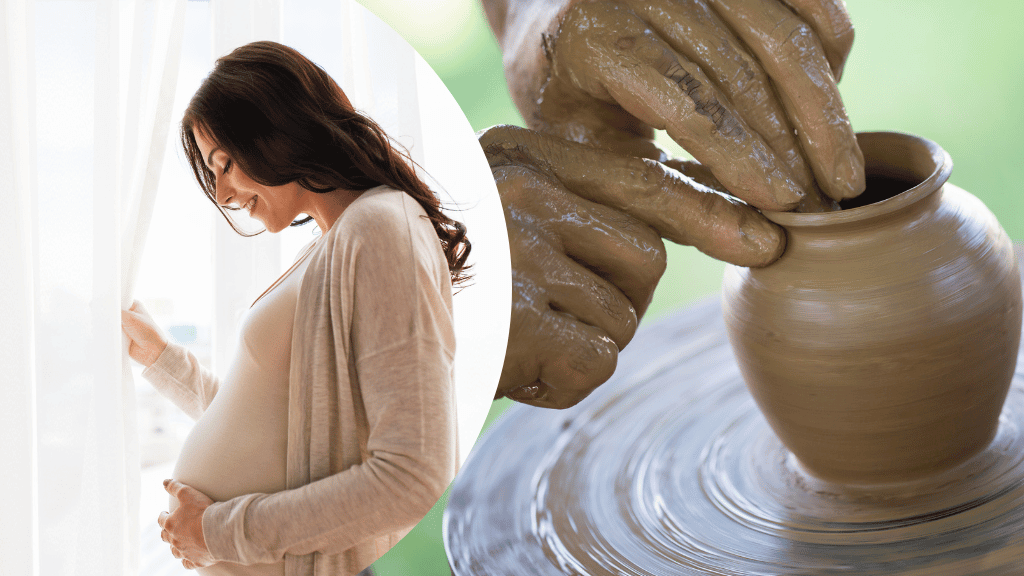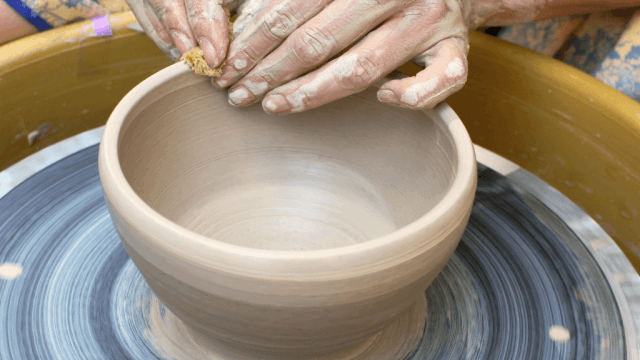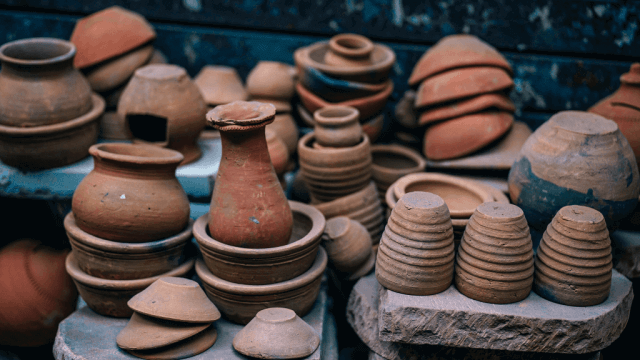During pregnancy, the primary risks of engaging in pottery making include exposure to toxic chemicals, heavy lifting, and repetitive stress on the body.
Expectant mothers should practice caution when handling materials like lead-based glazes or solvents, wear proper protective gear, avoid lifting heavy objects, and take regular breaks to reduce strain on muscles and joints.
Risks of Pottery Making During Pregnancy
Though pottery can be a relaxing and creative hobby, pregnant women need to be aware of potential risks associated with it.
Here, we discuss potential hazards of engaging in pottery while pregnant and emphasize safety precautions that can be taken.
Exposure to Toxic Chemicals
Many pottery materials—especially glazes, stains, and solvents—contain toxic chemicals that may be harmful to a developing fetus.
Lead-based glazes, in particular, can cause serious complications.
To mitigate risk, opt for lead-free and non-toxic glazes, wear gloves, use proper ventilation systems, and clean your workspace thoroughly after each session.
Heavy Lifting and Physical Strain
Pregnant women should avoid lifting heavy objects, including pottery equipment, as this can lead to unnecessary strain on the body.
Delegate lifting duties to a friend or partner, use carts or dollies, and ensure your workspace is organized for minimal strain.
Repetitive Stress and Ergonomics
The repetitive nature of pottery work, especially when using the potter’s wheel, can cause musculoskeletal discomfort or strain.
Combat this by taking frequent breaks, stretching, and switching between tasks.
Ensure proper ergonomics by adjusting your workspace to appropriate heights and using ergonomic aids like padded chairs and footrests.
Managing Dust Exposure
Clay dust, when inhaled, can cause respiratory issues.
Pregnant women should minimize exposure by using a vacuum with a HEPA filter instead of sweeping, wearing a well-fitting dust mask, and maintaining proper ventilation in their workspace.
Safe Pottery While Pregnant
By taking proper precautions such as minimizing exposure to toxic chemicals, avoiding heavy lifting, ensuring proper ergonomics, and managing dust exposure, expectant mothers can safely continue enjoying pottery making throughout their pregnancy.
Risks of Pottery Making During Pregnancy
Pottery can be a relaxing and creative outlet, but when pursuing pottery while pregnant, it’s important to consider potential risks associated with the activity.
This blog post discusses potential hazards and offers safety tips for expectant mothers engaging in pottery.
Exposure to Toxic Chemicals
Some pottery materials, including glazes, stains, and solvents, contain toxic chemicals that could pose a risk to a developing fetus.
Lead-based glazes are particularly dangerous.
Pregnant women should choose lead-free, non-toxic materials, wear protective gloves, ensure proper ventilation in the workspace, and clean surfaces thoroughly after working with these substances.
Heavy Lifting and Physical Strain
During pregnancy, lifting heavy objects can place unnecessary strain on the body.
To avoid undue stress, seek assistance with lifting, use carts or dollies to move materials, and arrange the workspace to minimize strain.
Repetitive Stress and Ergonomics
Pottery work, especially on a potter’s wheel, can cause musculoskeletal discomfort due to repetitive motions.
Manage this risk by taking breaks, stretching, alternating tasks, and maintaining proper ergonomics.
Use padded chairs, adjustable workstations, and footrests to enhance comfort and reduce strain.
Managing Dust Exposure
Inhalation of clay dust can lead to respiratory issues.
Pregnant women should minimize dust exposure by utilizing a vacuum with a HEPA filter, wearing a well-fitting dust mask, and maintaining proper ventilation in the workspace.
Proper Hygiene and Cleanliness
Keeping your workspace clean and maintaining proper hygiene while working with pottery materials can help reduce risks associated with chemical exposure and dust inhalation.
Wash hands thoroughly after handling toxic materials, avoid eating and drinking in the workspace, and routinely clean tools and equipment.
By considering these safety precautions and minimizing potential risks, pregnant women can safely continue enjoying pottery as a creative and fulfilling hobby.
Frequently Asked Questions
If you have concerns about engaging in pottery-making during pregnancy, you’re not alone.
Here are some common questions and concise answers related to this topic:
Is it safe to work with pottery materials while pregnant?
Yes, it can be safe if you take necessary precautions, such as using non-toxic and lead-free glazes, wearing gloves, ensuring proper ventilation, and maintaining a clean workspace.
How can I reduce the risk of respiratory issues from clay dust?
Minimize dust exposure by using a vacuum with a HEPA filter, wearing a well-fitting dust mask, and ensuring proper ventilation in your workspace.
What ergonomic measures should I take to minimize strain during pottery-making?
Adjust your workspace for proper height, use padded chairs and footrests, alternate tasks to reduce repetitive stress, and take breaks to stretch and rest muscles.
How should I handle heavy objects like pottery equipment while pregnant?
Avoid lifting heavy objects yourself.
Seek assistance from others, use carts or dollies, and organize your workspace to minimize strain on your body.
What precautions should I take when working with pottery glazes and solvents during pregnancy?
Select non-toxic, lead-free options, wear protective gloves, use proper ventilation systems, and thoroughly clean surfaces and hands after handling these materials.











